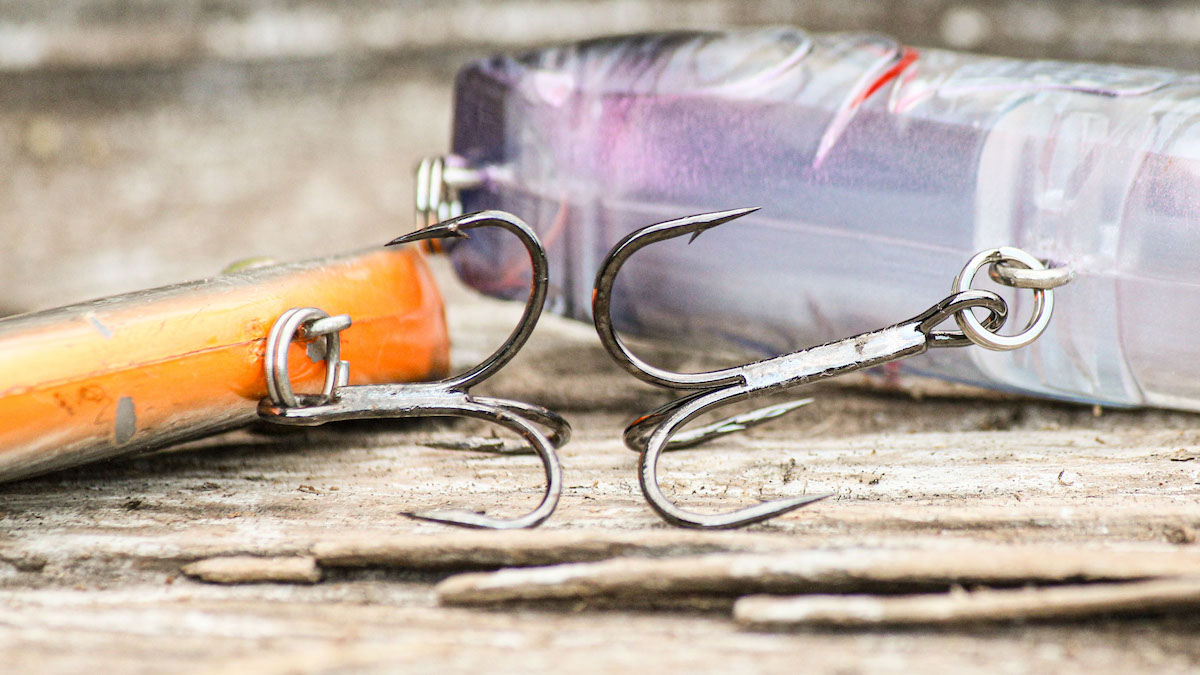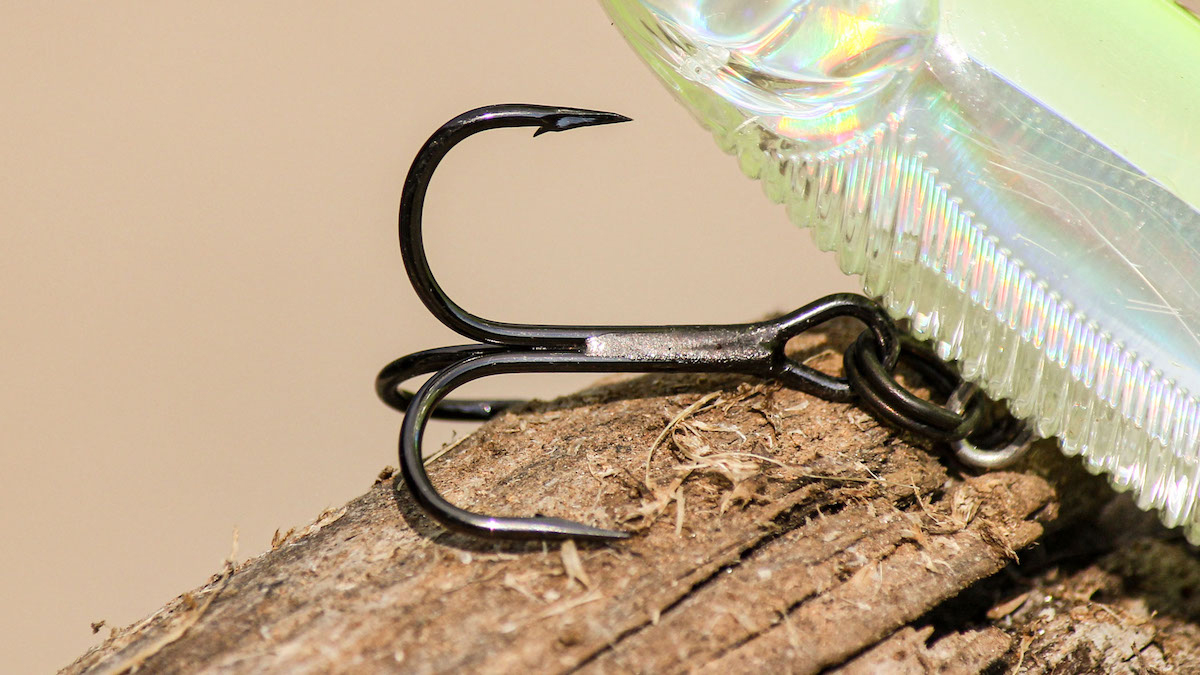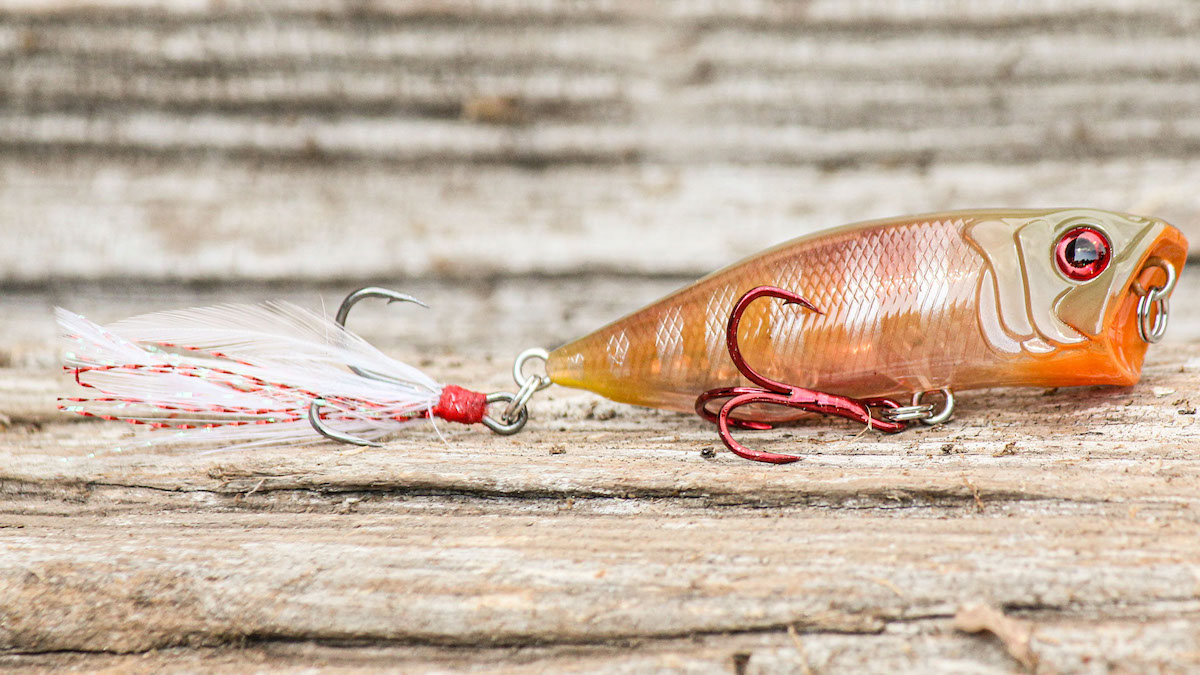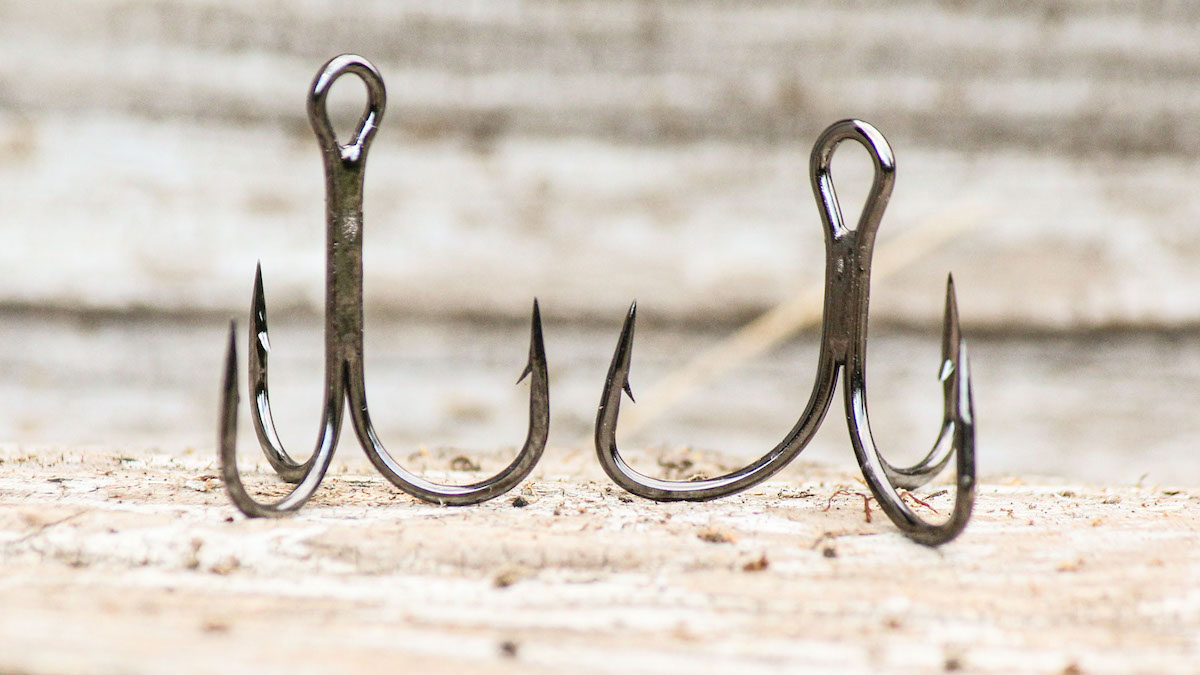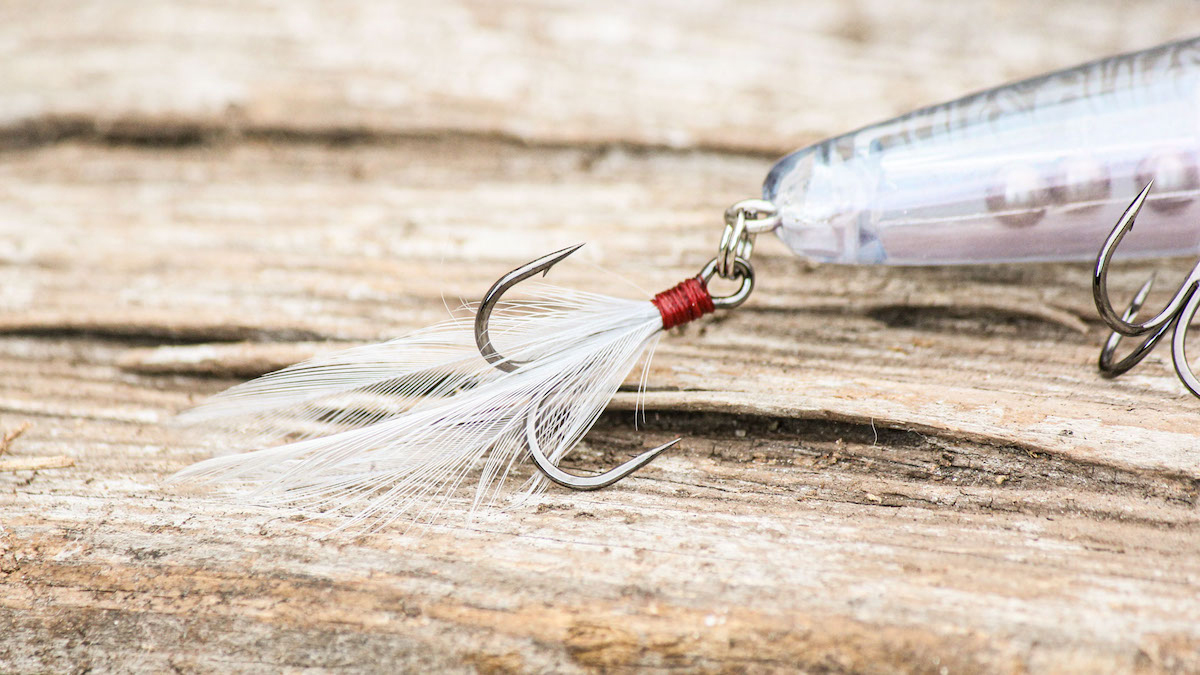When picking out the right treble hooks for a bass fishing bait, things can get a little tricky. For most lures, you could just go with something similar to what comes stock on them if the old hooks have rusted, been bent or are otherwise damaged. But that’s not always the best plan.
Some companies still put pretty cheap hooks on hard baits when they build them to try to keep the price of the baits down. There are anglers who don’t care all that much about having a set of top-quality treble hooks on a bait. So putting nice hooks on a lure and bumping the price up a couple bucks is actually a deterrent from those guys ever buying one of the baits at all.
But if you are interested in knowing which trebles are best for a particular bait, we’re hoping to help you today to simplify the search a bit.
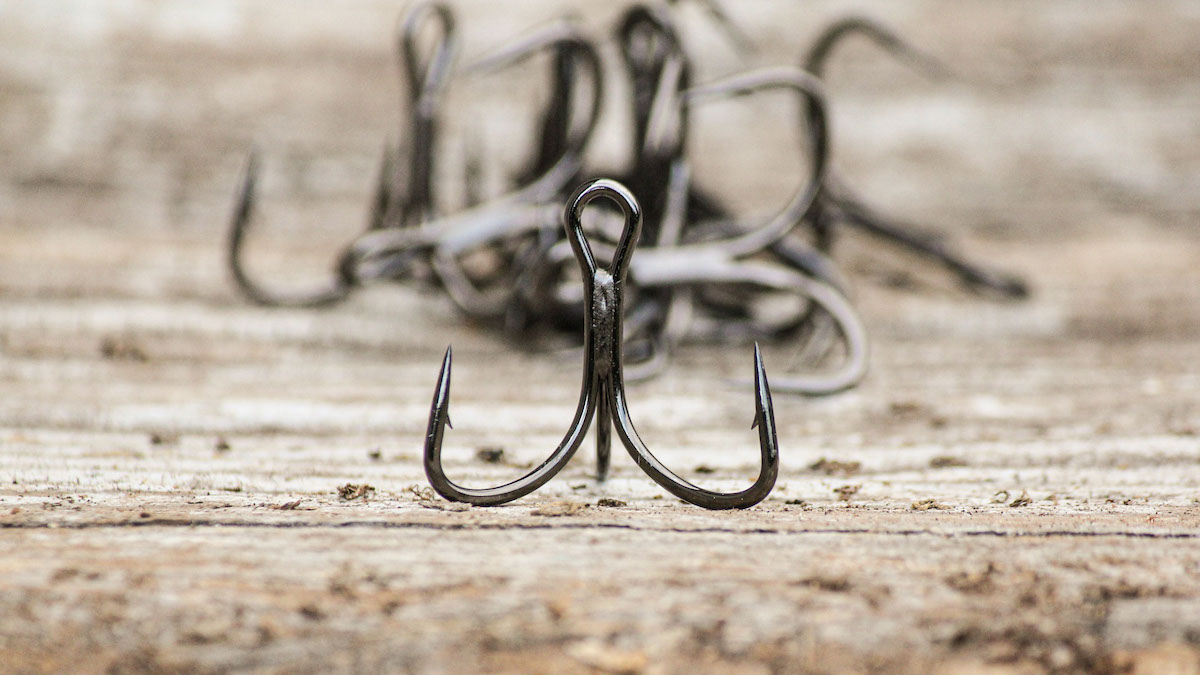
Triple Grip-style hooks
The term Triple Grip is actually brand-specific to Mustad. But the rise in popularity of these Mustad trebles has made Triple Grips synonymous with this style of hook, though there are a few other brands that make something similar now.
There are a couple key features that set this hook apart from other trebles. The hook point turns back in at a sharper angle compared to other hooks, while also maintaining a wider gap near the bend of the hook. This combination allows this hook style to lock into fish better than any other treble hook design on the market.
Triple Grip-style trebles work particularly well on any lure that you anticipate a fish getting completely in its mouth. So baits like lipless crankbaits, squarebills and even some mid-depth running crankbaits with smaller bodies are all well suited for Triple Grips. But when there’s less of a chance of a fish eating the bait completely and more of a likelihood of a fish swiping at a bait, you’ll want to go with our next hook selection.
Round-bend hooks
Round-bend hooks were the first trebles to come on the scene decades ago. Their name pretty accurately gives away the main design feature. These trebles have a rounded bend to them, with points running up and parallel to the hook shaft.
These are the hooks you’ll want on your bait if you anticipate having a lot of fish swiping at your lure, so baits like a Spook, wakebait or larger jerkbait for instance. Bass swipe or roll on these baits quite often and don’t actually try to eat the bait on the initial pass. With the turned-in point of Triple Grip-style trebles, this leads to a lot of missed opportunities.
But with round-bend trebles, you have a better chance of one or several of the hook points finding their way into the swiping bass. I’m not implying that you should go around trying to snag a non-aggressive fish with these hooks. Rather, the bass that you hook with these are typically taking a shot at the bait. But they may wise up just before they make the swipe or be a little timid to break the surface on a topwater. Round-bend hooks will help you catch more of these fish.
Specialty trebles
There are also a few specialty trebles out there now worth mentioning. These may have a round bend or a Triple Grip bend, but what sets them apart has more to do with some other distinguishing characteristic. Red, feathered and bladed treble hooks are good examples of these.
Red treble hooks are often used by anglers in hopes of the bass believing the hooks are blood in the water. Red is a popular color when it comes to bass fishing lures and the idea that a bass would instinctively react to a red hook makes sense. At minimum it makes more sense than having a black, bronze or other metallic color hook hanging from the bait. And to try to help the fish target the heart of the lure, anglers will often use only one red treble on the most forward hook hanger.
Feathered trebles are often a good idea on the back end of a topwater. The feathers mask the hook well, making the bait a little more appealing to a trailing bass and a feathered treble also gives off the appearance of a baitfish’s tail as it swings back and forth. Bladed trebles like the VMC Bladed Hybrid Treble are also a way to level up your treble hook game and give a whole new look to the back end of any hard bait you’re using to mimic shad.
Sizing
With most treble hook baits, the main thing you’ll want to pay attention to when selecting the size trebles to use is whether or not the hooks will be able to hang up on each other. There are more specific scenarios, like jerkbaits for instance, where you have to be careful not to put heavy hooks on the bait as that will mess up the bait’s ability to suspend.
But for the most part, you can pick trebles that can’t quite touch one another and this will max out the size possible for the bait. No. 4 trebles will do this for most half ounce lipless crankbaits and many squarebills. Going up a size to two No. 2 trebles works well for most walking-style topwaters between 4 to 5 inches in length.
There are also long- and short-shank hooks in both these two popular bends as well. You can use a long-shank treble to help a particular hook size cover more real estate. Sometimes you’ll want to use long-shank trebles with topwaters for instance, since the hook spacing is farther apart. Where you’ll use short-shank trebles on baits like squarebills, since the hook hangers are closer together.
In conclusion
The main two things you want to watch out for when selecting the best treble hooks for a bait are the hooks hanging each other and the size of the hooks effecting the action of the bait. When trying to decide which bend to go with, ask yourself if you anticipate a lot of bass swiping at what you’re throwing or if you think the bass will be able to get the majority of the bait in their mouths. If it’s the former, go with round bends. For the latter, look to Triple Grips.
Wanting to dress up the tail-end of a bait? Try a feathered or bladed treble hook. Feel like the bass aren’t getting your bait well? Swapping your front treble out for a red one might help the bass key in on the bait better. And when selecting the size, it’s typically a good idea to go as big as possible. That limit being set again by whether or not the hooks will hang each other. If you use these simple guidelines, you should be able to pick out the perfect trebles for nearly any bait.


